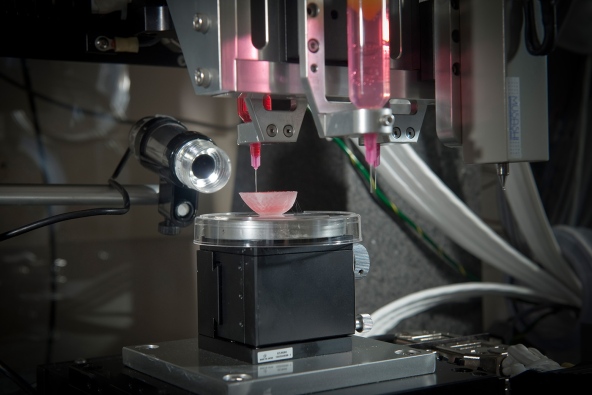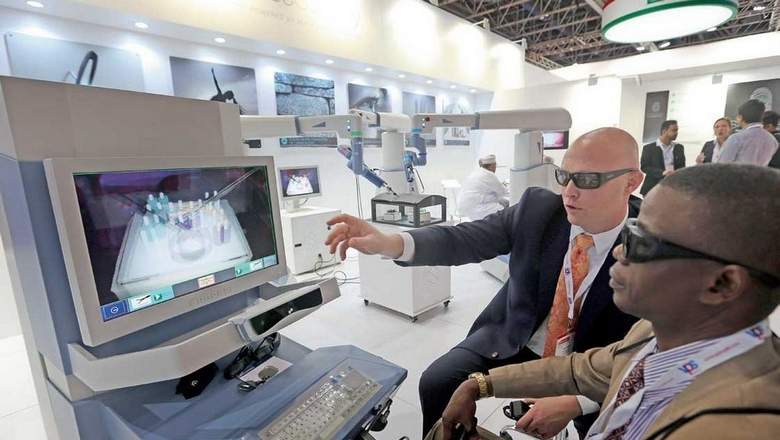 The United Arab Emirates has made no secret of its fascination with the possibilities presented through advanced technologies. The support provided by the government for exploration and innovation has regularly made headlines. And they aren’t just spending their money at home, they are spreading it around wherever they believe the benefits may be worth investing in. Washington DC’s Children’s National Medical Center has received millions of dollars in donations from the government of the UAE to help fund its efforts to improve 3D tissue printing and the integration of robots into surgery.
The United Arab Emirates has made no secret of its fascination with the possibilities presented through advanced technologies. The support provided by the government for exploration and innovation has regularly made headlines. And they aren’t just spending their money at home, they are spreading it around wherever they believe the benefits may be worth investing in. Washington DC’s Children’s National Medical Center has received millions of dollars in donations from the government of the UAE to help fund its efforts to improve 3D tissue printing and the integration of robots into surgery.
Dr. Peter C.W. Kim, Vice President and Associate Surgeon-in-Chief of the Joseph E. Roberts Jr. Center for Surgical Care at Children’s National, has hopes that soon things such as eardrums will be possible to create using 3D printed cells on 3D printed scaffolding. In an interview with Khaleej Times, Dr. Kim described some of the advances they are making in 3D printed tissue as a result of the UAE’s and others’ investments:

At the Wake Forest Baptist Medical Center in Winston-Salem, North Carolina, researchers are developing a 3D-printed kidney.
“What our engineers and researchers have done is not only design the plastic with it, but also graft cells onto it. This is where we are going. You will (in the future) be able to have organs on the shelf. Instead of harvesting it, you can print it. Initially, we are starting with structure tissues like knee joins, meniscus, bones. But ultimately, you’ll be able to incorporate functional tissue into it. We’re probably five to seven years away from that. It’s like an inkjet, and you can put different cartridges for different cell types.”
Another area of research that is receiving strong support from the UAE is the development of robots that can perform surgical procedures. The idea here isn’t to eliminate the highly skilled and creative surgeon, but rather to provide yet another tool to strengthen their possibilities for success. In other words, just as having a scalpel made from carbon steel is better than one made from bone, these robots would provide even better assistive service to a team undertaking a surgical intervention.
These assistive robots would still require supervision and input by surgeons but could actually eventually allow for operations to be performed remotely, effectively spreading surgical talent beyond a person’s normal geographical limits. These types of robots would be particularly helpful when undertaking routine surgeries, possibly freeing up talented surgeons’ time to be involved in more complex or delicate operations. It’s more than just surgery over the Internet though; Dr. Kim suggests that these robots actually have a certain level of intelligence, also referred to as situational awareness.

Highly intelligent robots will soon be able to carry out surgeries almost autonomously, say experts.
[Image: Dhes Handumon]
“[W]hat we have done (with robotics) is to add better vision and intelligence…It’s able to follow the task programmed into it. Imagine, you can program the best surgeon’s techniques into it and have it available anywhere, so, for example, you wouldn’t have to send surgery patients from the UAE to the United States,’ he said. “Sixty percent was done fully autonomously, and 40 percent was supervised. The robot would choose what to do and the surgeon would simply approve it. Whatever you need, whenever you need it, however you need, you’ll have access to the very best surgery. It’s not just tele-operated, that’s just a bandwidth issue. This has intelligence.”
Reducing the travel time for patients both lowers the cost of surgery and the stress associated with it. Freeing up surgeons to focus on the out of the ordinary, rather than the time consumed in performance of the routine, is also a boon to the advancement of surgical procedures both in terms of innovation and in terms of successful outcomes from previously much higher-risk operations. Given the possibilities presented in these two cases, it’s easy to see why the UAE has decided to devote significant resources to this hospital in particular and to the advancement of 3D technologies in general. Discuss in the UAE forum at 3DPB.com.
Subscribe to Our Email Newsletter
Stay up-to-date on all the latest news from the 3D printing industry and receive information and offers from third party vendors.
You May Also Like
Further Understanding of 3D Printing Design at ADDITIV Design World
ADDITIV is back once again! This time, the virtual platform for additive manufacturing will be holding the first-ever edition of ADDITIV Design World on May 23rd from 9:00 AM –...
3D Printer Maker EVO-tech Reborn as NEVO3D — Once More With Feeling
EVO-tech was a 3D printing service and original equipment manufacturer established in 2013 and based in Schörfling am Attersee, Austria. The company produced high-quality material extrusion systems featuring linear bearings,...
3D Systems Brings 3D Printed PEEK Cranial Implant to the U.S. with FDA Clearance
For more than 10 years, 3D Systems (NYSE:DDD) has worked hand-in-hand with surgeons to plan over 150,000 patient-specific cases, and develop more than two million instruments and implants from its...
CDFAM Returns to Berlin for Second Annual Symposium
The second CDFAM Computational Design Symposium is scheduled for May 7-8, 2024, in Berlin, and will convene leading experts in computational design across all scales. Building upon the first event...































